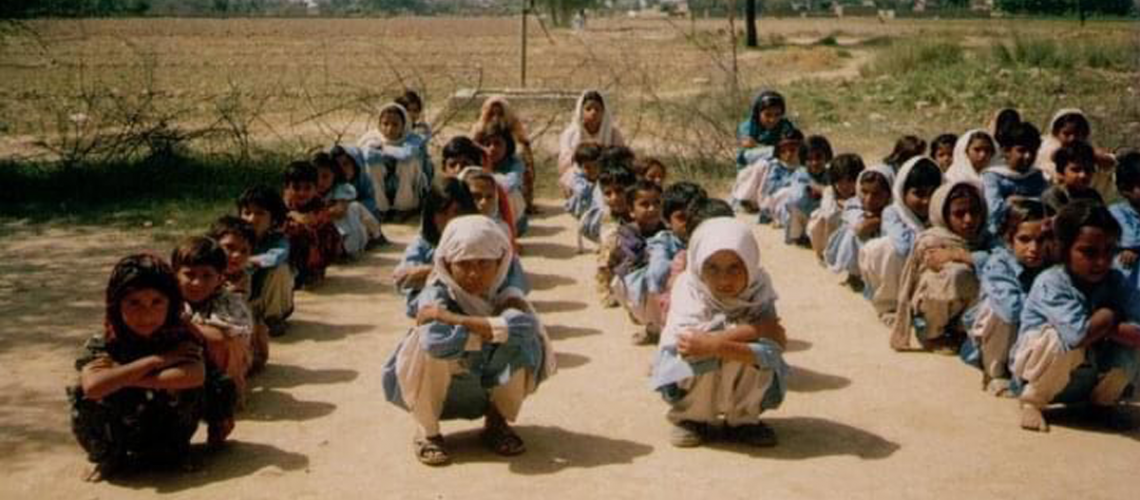The problem of out of school children is global. According to the UNESCO Institute for Statistics (UIS), about 258 million children and youth are out of school. The total includes 59 million children of primary school age (6 to 11 years), 62 million adolescents of lower secondary school age (12 to 14 years) and 138 million youth of upper secondary school age (15 to 17 years) are out of school across the world.
Pakistan suffers the second largest number of primary school age children out of school in the world after Nigeria. The country has more out of school children, adolescents, and youth than any other country in South Asia. Currently 5.6 million primary, 5.4 million lower secondary and 9.8 million upper secondary school age children out of school in Pakistan.
On 25 September 2015, the UN General Assembly adopted an agenda for 17 Sustainable Development Goals (SDGs) with 169 associated targets, aiming to achieve them by 2030. These goals and targets came into effect in January 2016. Pakistan is also a signatory of SDGs. One of the targets of the fourth SDG is to ensure, “that all girls and boys complete free, equitable and quality primary and secondary education by 2030”. However, the UIS reported that three years after the adoption of the fourth SDG, there was no progress in reducing the global number of out of school children. The UIS reports further evidenced that pupils dropping out of school was a barrier to achieving the universal primary and secondary education targets in past.
Out of school children have two subcategories: ‘dropped out’ and ‘never enrolled’.The evidence shows that most of the poor and developing countries have achieved more than 90% of enrolment rate. Despite progress in access, dropout is still an issue. They are unable to retain all the enrolled children at school. The problem of dropping out of schools is increasing the number of out of school children in the world. It is obvious that the world can only meet the targets of the fourth SGD if all children stay in school and complete an equitable and high-quality primary and secondary education. Generally, dropout is a notion assigned to those children who enroll but do not complete the compulsory level of schooling before their legal school age expires.
Pakistan is a lower middle-income South Asian country with a population of over 207 million, of whom approximately two-thirds live in rural areas. The overall gross primary school enrolment ratio is 94.33 percent in Pakistan. However, retention is a big challenge for the government. The overall survival rate to Grade-V in primary education is 63 percent. For Class I-VIII survival rate for male and female at national level is 48 and 43 respectively. This rate reduces further to 39 and 34 percent for males and females at Class-X. It means that out of the total enrolment in Class 1, the 61% boys and 66% girls drop out of school before reaching Class-X. If we calculate the fail rate among the survived children at Class IX-X, we will get depressed by knowing the actual number of students who complete secondary education in Pakistan. Just for the sake of our understanding, we explore this problem at micro level. We look at the Class-IX annual examination results for the last five year at Board of Intermediate and Secondary Education Gujranwala. The Gujranwala Board is the largest one in the province of Punjab. It consists of six districts, namely Gujranwala, Gujrat, Hafizabad, Mandi Baha-ud-Din, Narowal, and Sialkot. In 2015, 2016, 2017, 2018 and 2019 out of the total appeared candidates in Class-IX annual examinations, only 40.58%, 54.01%, 52.84, 54.51 and 52.78 passed respectively. The average pass rate in the annual Class-IX exam is 51% for the past five years at Gujranwala Board. In the Provinces, only Punjab has better survival percentages. If we look at the percentage of pupils who pass secondary school exam successfully at national level, we may end up with conclusion that out of the total enrolment in Class-1, hardly 30% graduate from high school after ten years of schooling and the rest 70% either drop out or fail to pass the board exams during Class IX-X. This is probably the highest school dropout rate in the world.
For a moment, ignore the notion ‘equitable and quality primary and secondary education’, as worded by the SDGs, and focus on the constitutional responsibility of the Government of Pakistan to provide free and compulsory education for all children aged five to sixteen. It is apparent that a high dropout rate from public schools is a big hurdle in achieving the targets of SDGs in education in Pakistan.
After a decade of independence, Pakistan formally introduced and implemented seven Five Year Plans and five main national education policies to encourage socioeconomic and educational development. The focus of the first two Five Year Plans (1955-60; 1960-65) was increasing primary school enrolment. However, the problem of school dropout was first recognised in the Third Five Year Plan (1965- 70). After 56 years passed, since the Third Five Year Plan identified the problem of dropping out, Pakistan has never had introduced a widespread national dropout prevention policy. The provinces, and particularly Punjab, implemented some interventions mostly in form of cash transfer schemes to retain the children at schools but they could not bring the dropout rates down to a large extent. This is a time to design an effective dropout prevention policy at national level to achieve SDGs in education by 2030.
The policy focus at national level should be on dropout prevention strategies rather than enrolment drives. Good intervention always requires local analysis of problems and assessments of potential strategies at the point of service delivery. I therefore, recommend a bottom-up policy approach to understand and address social phenomena, such as of dropouts, at the grass-roots level.

